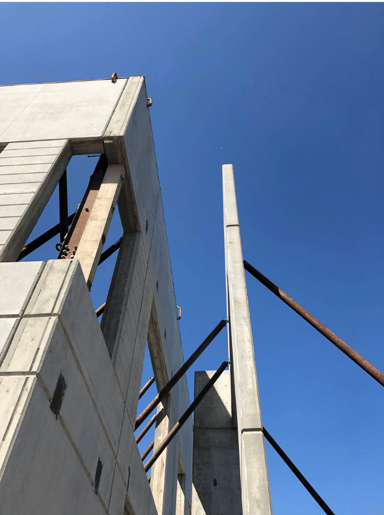
When owners determine a capital project is needed, it is a business purpose driving the decision. Therefore, the purpose of designing and constructing a project is to satisfy the business need - expand capacity, introduce a new product, or a host of other needs. The ultimate goal? To drive profits! But how?

Traditional design and construction process is fraught with risk and waste that hampers timely, efficient delivery. Risk and waste are evident by value engineering, requests for information (RFIs), and change orders. Each has the potential to delay completion, degrade quality, and decrease the rate of return for the owner.
Rethink how design and construction projects are conceived and delivered. The focus has been on procuring products and labor efficiently and at the least cost. Typically, specifications must name three sources for each product, feigning competition. However, the contractor goes shopping - weighing price, terms, and schedule to select the product for his bid. Another contractor does exactly the same for another product, and so on.
When the bids are tallied, low price may win. Regardless, all the products must interface to complete a system, and ultimately the project. But, those interfaces were not a factor for the contractors during bidding. The result? Additional unanticipated time and cost to make all the contractor proposed products work together.
Can it be better?
What If Specifications…?
Traditional construction specifications are organized by MasterFormat. This organization is product-centric. It produces a shopping list to help solicit product pricing used for contractors' bids.
What if the specifications were not product-centric? What if specifications described complete assemblies instead? The assemblies could be arranged to be fabricated off-site as repeatable modules. The modules would simply plug-and-play at the project site. The fabricator would control the interfaces to ensure coordination and assembly success.
What if specifications helped organize work packages? Would estimating and scheduling construction logistics be simplified? Organizing specifications by building system enables scheduling and monitoring by each specified system. For example, the floor framing system (beams and columns) specified as a complete system can be broken into work packages per floor, per quadrant, or other finite package. Aligning specifications with work packages enables discrete crew assignment and production monitoring directly related to project estimates and schedules.
What If Contractors…?
Specifications are written by the design team and shared with the owner and contractor usually at the end of each design phase. Project participants have only a short time to review and comment on what could be a 2,000-page document, all while trying to produce an estimate simultaneously.
What if contractors helped write the specifications? Could the design team benefit from information about local material and labor markets? Early in the design process, when considering options, understanding local conditions may influence design decisions. Making the specification process transparent and inviting contractors, installers, and suppliers to participate as the specs are written will improve reliability. Many questions will be resolved before bidding and construction begin. Products that may be unavailable, price prohibitive, poorly serviced, or come with unfavorable commercial terms can be flagged for additional consideration before the design is locked in.
What If the Project Team…?
What if the entire team achieved profitability goals? What if waste and rework were minimized or eliminated completely? Construction Industry Institute (CII) research[i] indicates 41% of construction cost is attributed to waste. Regardless of the project size, that percentage represents real dollar cost.
Specifications can help reduce both waste and rework. Inviting the entire project team - owner, designer, and constructor - to participate will improve project outcomes through informed decision-making. Transparent, collaborative specifications development enables exploring design options and continuous analysis of performance, durability, aesthetics, and cost to inform the team. When fully informed, decisions will be reliable and trusted, allowing designers to proceed confidently without fear of value engineering and rework.
Why Wait…?
Owners have and still are searching for a solution via project delivery methods. Choosing the right contract may help. But contracts cannot force neighborly collaboration. Transparency transforms behaviors. When information is freely shared and available to everyone on the team, the information will be reliable because the team will self-correct. Reliable data allows the team to act with confidence when producing work. Reliable data enables informed decisions to minimize or eliminate rework.
Open the specifications black box. Share the data. Share the process. Invite participation. Make decisions, together. Allow capital projects to produce profits.
